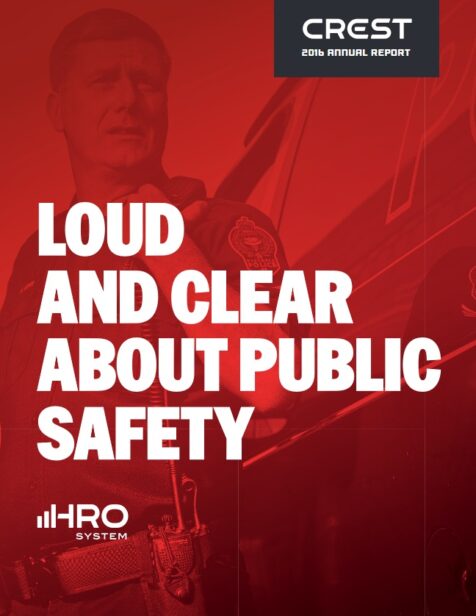A significant part of the new HRO P25 system sees user agencies replacing their existing radios with new devices. A number of agencies have taken possession of new Motorola APX radios including: Military (Police and Fire), BC Ambulance, Victoria Fire, Saanich Fire, Esquimalt Fire, Oak Bay Fire, and University of Victoria Security. All agencies using the P25 radios will experience better audio clarity with new radios offering superior background noise suppression technology. The new radios have very good noise cancelling technology that suppresses background noise, wind etc – so they improve audio clarity even on the existing network. The new network does other things like better coverage, less dropped calls, less busy signals.
All agencies on the P25 system we will see better audio clarity with new radios offering superior background noise cancelling technology. In addition, we have more channels available providing more capacity at peak or critical times. Finally, with the move to simulcast technology, radios do not roam as often, which is considerably better for optimal communications.
What is noise suppression and why does it matter?
Noise suppression is technology that aids in reducing background and competing sound interference. Clear audio is essential to good communications.
What is interoperability and why does it matter?
Interoperability is an important public safety advantage which places multiple emergency responders sharing a common radio telecommunications platform. This builds critical redundancy into the system and strengthens regional back up (interoperability).
A strategic alignment with Vancouver-based E-Comm not only made it possible for CREST to secure E-Comm’s volume pricing with Motorola for radios and system upgrades, but it means that CREST and E-Comm users share a common technology platform. Superior response capacities and capabilities are now possible in the case of a natural disaster. The shared platform also provides for greater fiscal and human resource efficiencies with respect to training and system support interoperability.
About E-Comm
E-Comm 9-1-1 is a multi-municipality agency that provides emergency communications operations for British Columbia. The company coordinates 9-1-1 service for police, fire, and ambulance service, providing call-taking and dispatch services for multiple agencies in the Lower Mainland area. E-Comm’s service area covers Metro Vancouver (from Lions Bay to Langley), the Sunshine Coast Regional District, south Squamish-Lillooet Regional District and the Whistler-Howe Sound area serving a population of more than two million residents. The company provides call-taking for all participating municipalities, transferring incoming calls to the appropriate agency. Furthermore, E-Comm provides dispatch services for eleven police departments and nineteen fire departments.
E-Comm owns and operates the Wide-Area Radio Network (WARN), a shared communications system used by police agencies, fire departments and the entire British Columbia Ambulance Service in Metro Vancouver. The WARN features earthquake-resistant infrastructure and enhanced security measures, providing improved coverage, clarity, and reliability. The WARN allows for real-time communication between members of separate agencies, increasing inter-agency communication and coordination.

